Jyotisha In Srimad Raamaayana by Kowtha Lalith Manohar
Article by Kowtha Lalith Manohar
Introduction:
Bharat is the sacred Karma Bhoomi and Punya Bhoomi endowed with the majestic Himalayas, Vindhya Range of mountains, forests like Naimisaranya, Dandakaranya and other places, and holy rivers like Ganga, Yamuna, Narmada, Godavari, Krishna and Kaveri flowing through the length and breadth of the country. Brahmarishis and Maharishis born in this land have handed down an invaluable legacy and wisdom through various classical texts. The Vedas are the basis for our Sanatana Dharma. These Vedas were identified by Sri Veda Vyasa and passed on to his disciples. There are six Angaas (limbs) to this divine knowledge. Jyotisha Shastra is one of them. The traditional Vidyaas of our country are classified as 18.
For those who cannot read the Vedas, the Itihasas and Puranas are a boon. Srimad Ramayana is the Adi Kaavya, the first treatise authored by sage Valmiki as per the instructions of the creator under the guidance of Sage Narada. The life of Sri
Rama, the Maryaada Purushottama, is vividly described in this treatise.
There are plenty of references to Jyotisha Shastra in Ramayana. Ramayana consists of seven kandas (chapters). In every kanda we find references to Planets, Muhurthas, Vaastu and a variety of other information useful in the day-to-day life. I will narrate a few of them here as they come to my mind from the first six chapters.

1) Baala Kaanda
In the first chapter – Balakanda, we have the reference to the birth of Sri Rama and his three brothers. Here Valmiki narrated thus:

“After 12 months, queen Kousalya gave birth to Sri Rama in the month of Chaitra on Shukla Navami day. Kousalya delivered Sri Rama, the Universal God, in Punarvasu star in “Karkata Lagna” with Jupiter (exalted) with Moon, Sun, Mars, Venus and Saturn also being exalted. Bharatha was born in the star Pushyami in Meena Lagna. The twins Laxmana and Shatrughna were born in the star Aslesha in Karkata Lagna on the next day”.
The practitioners of astrology can draw the charts and have an in-depth study.
The marriage of Sri Rama and his brothers was performed in Uttara Phalguni star. King Janaka tells the sages Vasistha and Viswamitra as follows:

“Uttara Phalguni star is tomorrow. This star is proclaimed as very auspicious for marriage by the learned”.
Marrying four children of the same parentage in the same Lagna and at the same venue is prohibited. That being so, how the marriage of Sri Rama and his three brothers on the same day justified?
Though the father is the same person, the mothers are different. So the above prohibitory rule did not apply in the case of Rama and Bharatha. But Laxmana and Shatrughna had the same mother. In this case though the Lagna is same, the Navamsa Lagna is different. Hence this is acceptable. This clarification is available in the commentaries on Ramayana which have discussed these aspects elaborately with reference to other connected texts.
2) Ayodhya Kaanda
In the second chapter – Ayodhya Kanda we find references to utpata-karaka planetary combinations, references to dreams and their effect, the importance of Vaastu Shastra etc.
In connection with the coronation of Sri Rama, King Dasaratha informs sage Vasistha as follows:

“Tomorrow will be Pushyami star, very auspicious for the coronation of Sri Rama as the prince. Please make arrangements for same.”
After the coronation of Sri Rama was announced, Dasaratha sends word to Sri Rama. When Sri Rama comes, he informs him as follows:


“Rama! I am getting frightening dreams. I have seen meteors falling with a thunderous sound. Oh Rama! my birth star is occupied with the planets Surya, Kuja and Rahu. The Daivagnas state that when such omens appear and malefics occupy the birth star as stated above, normally, the king will either die or face a dangerous situation. Today the moon has risen in the Punarvasu star. Tomorrow will be Pushyami which is specific for this auspicious function as per the Daivagnas. Hence you get ready for the coronation and observe the required rituals”.
Here we find references to evil dreams and conjunction of Malefics and auspicious occasions. The astrologers are referred to as “Daivagnas” and “Daivachintakaas”. So a good astrologer is one who constantly studies the planetary movements and the welfare of the person who approaches him.
When Sri Rama was asked to go to the forests and Laxmana gets furious, Sri Rama pacifies him in different ways.

“Happiness and grief, peace and anger, profit and loss, smooth-sailing and mistakes – all these happen as per praarabdha. One has to understand the secret of this and conduct himself to make one’s life happy and peaceful”.
After reaching the forest, Laxmana constructs the hermitage for the trio to live in. Here Sri Rama tells Laxmana:
![]()
“Oh Soumitri! One has to propitiate the Vaastu devatas in the new premises to have a long and happy life”.
We spend enormous amounts in constructing big buildings. We should be equally careful to see that the required rituals are performed.
3) Aaranya Kaanda
Valmiki describes the event of Ravana taking away Janaki as “Budhah Khe Rohineemiva”. This statement has got a very deep meaning. We should try to analyse and understand the same.
We find in this chapter some startling points. A bird (Jatayu) tells Sri Rama about Muhurtha. A demon Kabandha, after being killed, becomes a divine personality and advises Sri Rama as to what one should do when he is going through a bad (dasa) period.

Jatayu tells Sri Rama – “Ravana has taken away your consort, Sita in the “Vinda” muhurtha. The person who steals another person’s property in this Muhurtha, will not be able to retain same with him or enjoy same. The owner will get back the property. Ravana did not think about this while taking away Sita. He will definitely perish like a fish caught in the hook.”
Kabandha’s hands were cut off by Rama and Laxmana and he was cremated. The demon gets His original Gandharva form and advises Sri Rama not to get worried. He tells him about Sugriva and advises as under:
![]()
He states that “one who is afflicted by a bad dasa will get relief with the help of another who is in a similar state. Rama’s wife was stolen by Ravana and Sugriva’s wife also was taken away by Vali. So both are facing identical problems. Rama is nearing the end of his bad dasa. So also is Sugriva. So their friendship will be beneficial to both of them. This could be perceived by Kabandha after he was released from the curse and attained his original form”. There is a deep meaning in these words of advice.
4) Kishkindha Kaanda
Valmiki describes the fight between Vali and Sugriva as a fight between Kuja and Budha “Budhaangaarakayoriva”. This point has to be considered well.
The monkey army led by Angada and consisting of Jambavan, Neela, Hanuman and others reaches the shores of the sea. The bird Sampathi wants to devour them. Angada narrates the story of Rama. Then Sampathi tells them about the whereabouts of Sita.

“Staying here, I am able to see Janaki and Ravana. The sorrowing Sita is kept in Lanka and is being guarded by female demons. You will be able to find her, the daughter of Janaka there. We have the golden eyes that can see things that are miles away.”
Here we should note that even birds have divine vision by virtue of the penance done by them. Sampathi is definite about what it said. Daivagnas with the background of penance and knowledge of Jyotisha Shastra will be able to give amazing predictions.
5) Sundara Kaanda
We find references to Vaastu Shastra in this chapter. Hanuman sees the layout of Lanka and the magnificent palaces of Ravana. Valmiki describes this as follows:


“Hanuman has seen the magnificent palaces of Ravana brimming with prosperity. These buildings are absolutely bereft of any Vaastu defects. They appeared as if they were built by Maya himself in accordance with Vaastu Shastra”.
Here the reference to Maya, the author of Vaastu Shastra is to be noted. This implies that the Vaastu Shastra was there even before Ramayana period.
At the first sight of Sita in Ashoka Vana, Hanuman was moved and exclaims as under:

Here the sage describes “Sita as the most venerable lady and the consort of the Guru of Laxmana who is an ardent disciple of his Guru (Rama). If such a lady is afflicted by grief we have to understand that time is insurmountable.”
The statement “Kaalo hi Durathi kramah” appears for nearly more than 50 times in this treatise. The sage is drawing the attention of the readers to the undisputed fact that “Kaala” is insurmountable.
One has to bow down before the “Kaala Purusha”. One’s wisdom lies in identifying the auspicious and inauspicious segments of time and act in a wise manner taking guidance from the Shaastras and Gurus.
The narration of her dream by Trijata to the female demons is very interesting to analyse for those who are conscious of swapnas (dreams) and have an interest to read Swapna Shastra.
6) Yudha Kaanda
In this chapter we find that the muhurtha for starting from Kishkindha to Lanka for the battle has been fixed by Sri Rama.

“Oh Sugriva! Now the Sun is in the mid-heaven and the muhurtha is Vijaya. So let us start our journey now. Today is Uttaraphalguni star and tomorrow will be Hastha star. Let us start with the army of all the Vaanaraas”.
After the death of Indrajit, the grief-stricken Ravana, in a fit of anger goes to kill Sita. At that time, his minister by name Suparsva stops him and advises him to fight with Rama and gain victory. He advises Ravana as under:

“You get the army ready today, the chaturdasi day of Krishna Paksha. Tomorrow is Amaavasya when you should go to fight Rama to gain victory”.
Amaavasya is good for demons and bad for others. Hence Rama finds it very difficult to kill Ravana.
He was tired. At that time sage Agastya appears before Rama and gives the upadesha of Aaditya Hridayam. He advises him to repeat it three times with pointed devotion and that he will kill Ravana now. That was meticulously followed by Sri Rama and Ravana was conquered. Righteousness prevailed over evil.
Conclusion
Even a Purana Purusha, Sri Rama, the divinity personified, had to undergo trials and tribulations due to Kaala mahima. Nobody could be an exception.
From the above we find that Kaala (time) is very powerful. It has no friends or enemies. It goes on doing its work. This can be put under check to some extent with divine help and guidance of a Satguru. Constant and pointed devotion to the Supreme is the only way to get the divine help.
Jyotisha Shastra is as old as Vedas. It is a divine science. It helps us like a torch light in darkness.
This should not be misused. The Jataka Chakra enlightens one about the cumulative effect of his/ her past Karma. This science is closely knitted with Karma Siddhantha. The result of Punya karma (righteous deeds) will be peace and happiness and the result of Paapa karma (unrighteous deeds) will be grief and misery. So one has to be very careful in his/ her actions. One should take the guidance from our Shastras and proper Gurus before swinging into any action.
Let us all take the help of this divine science and shape our future. Let noble thoughts come to everyone of us from all directions. May the supreme shower his blessings on everyone in this universe to enable them lead a righteous life thereby bringing peace, happiness and prosperity to everyone.
Om Shanti

About Author: Sri Manohar has been one of the finest scholars of the Vedic sciences, continues to conduct Veda Sabha started by his grandfather 119 years ago. He is the National Vice Chairman of ICAS, Delhi. He has been awarded the Life Time Achievement Award by Raman & Rajeshwari Research Foundation, Bangalore. Involved in activities with Jagadguru Sankaracharyas of Sringeri Sarada Peetham, Kanchi Kamakoti Peetham, Puri Goverdhan Peetham, Dwaraka Peetham, Sakatapuram Sri Vidyaa Peetham, Hariharapuram Sri Lakshmi Narasimha Peetham and Pushpagiri Peetham. “Vipra Siromani” conferred by Jagadguru Sankaracharya of Goverdhan Peeth, Puri and “Guru Kainkarya Seva Nidhi” Conferred by Sri Ganapati Sacchidananda Swami of Avadhuta Datta Peetham, Mysore. In his spare moments he composes poems in Sanskrit.


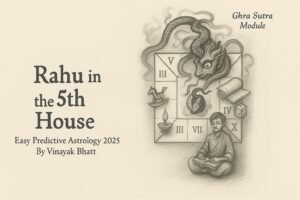
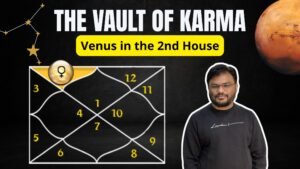
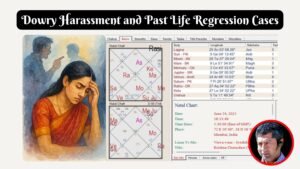
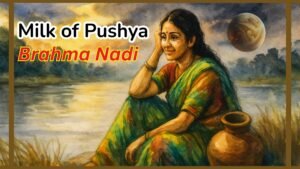
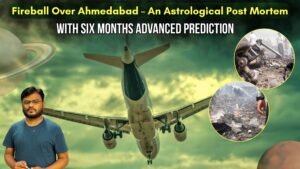
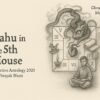

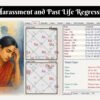
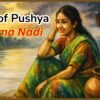
Leave a reply
You must be logged in to post a comment.